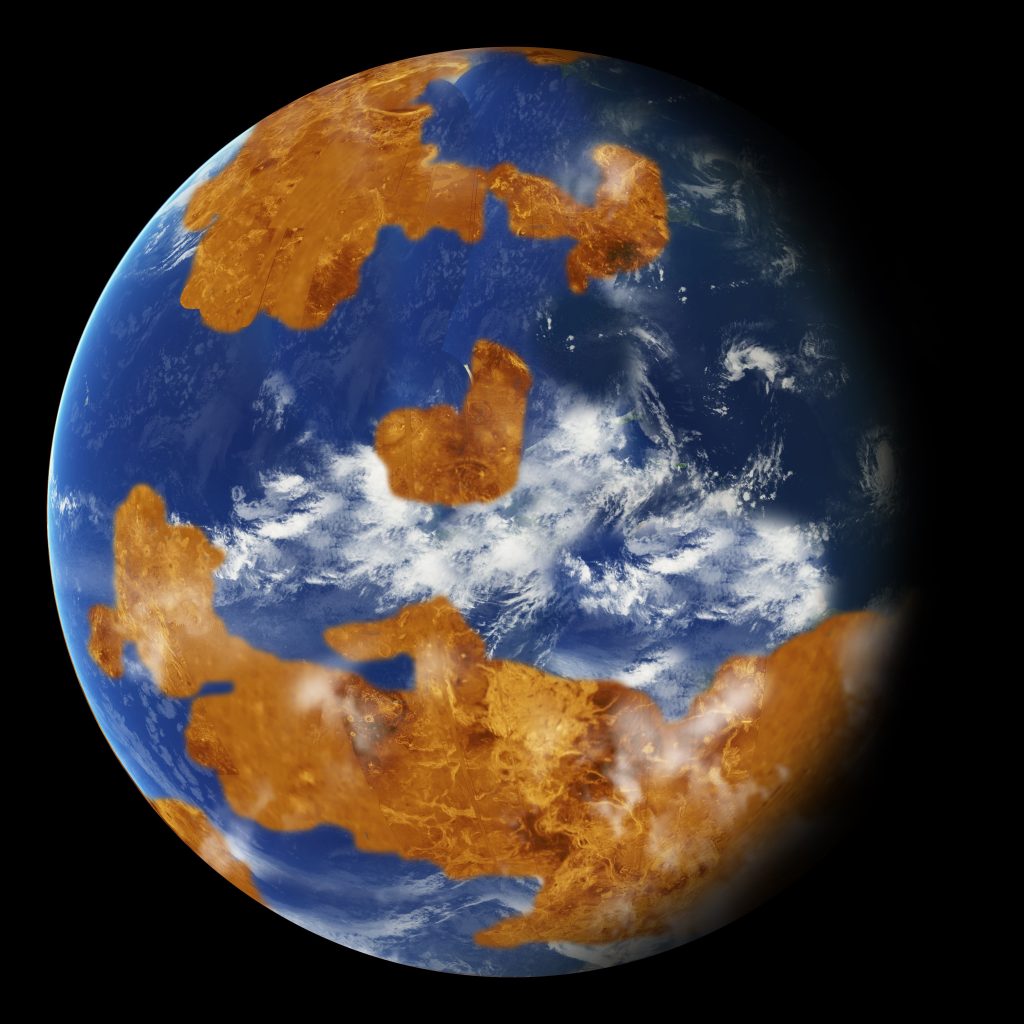
It sounds outlandish, but according to new research, the scorching planet of Venus could once have been habitable. The average surface temperature on Venus today is 863 degrees Fahrenheit (462 degrees Celsius) but a study presented at the EPSC-DPS Joint Meeting 2019 (European Planetary Science Congress and the American Astronomical Society’s Division of Planetary Science) claims that millions of years ago, the planet could have been a temperate place with liquid water on its surface.
The research suggests Venus could have existed in this temperate state for 2 to 3 billion years, until a significant transformation began 700 million years ago. “Our hypothesis is that Venus may have had a stable climate for billions of years,” author Michael Way of The Goddard Institute for Space Science said in a statement. “It is possible that the near-global resurfacing event is responsible for its transformation from an Earth-like climate to the hellish hot-house we see today.”
The research is based on computer simulations of what kind of water coverage in the past would have led to the conditions we see on Venus today. The models needed to take into account the fact the radiation from the sun has increased over time as the star has grown hotter. “Venus currently has almost twice the solar radiation that we have at Earth,” Way explained. “However, in all the scenarios we have modeled, we have found that Venus could still support surface temperatures amenable for liquid water.”
One big issue this research raises is what could have happened to turn Venus from a hospitable planet to the scorched rock it is today. Like Mars, it is hypothesized that the changes to Venus’ temperatures were due to changes in its atmosphere. “Something happened on Venus where a huge amount of gas was released into the atmosphere and couldn’t be re-absorbed by the rocks,” Way said. “On Earth, we have some examples of large-scale outgassing, for instance, the creation of the Siberian Traps 500 million years ago which is linked to a mass extinction, but nothing on this scale. It completely transformed Venus.”
The traditional view of scientists is that Venus is outside of the habitable zone, but this research challenges that. “We need more missions to study Venus and get a more detailed understanding of its history and evolution,” Way said. “However, our models show that there is a real possibility that Venus could have been habitable and radically different from the Venus we see today. This opens up all kinds of implications for exoplanets found in what is called the ‘Venus Zone’, which may, in fact, host liquid water and temperate climates.”
Editors' Recommendations
- Here’s why scientists think life may have thrived on the ‘hell planet’ Venus
- How ESA is getting its spacecraft ready to explore hellish conditions of Venus
- Two different spacecraft will be swinging by Venus this week
- We finally know exactly how long a day on Venus lasts
- Gorgeous image of Venus snapped by the Parker Solar Probe on its way past




